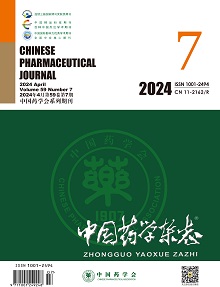OBJECTIVE To provide the basis for the original source and quality control, and investigate herbal textual and pharmacognosy of Yi medicine
Peperomia tetraphylla(Guo Jiu Lu).
METHODS By consulting ancient and modern herbal literature combined with actual investigation and research, the research was carried out from four aspects: name, the origin, Yi medicinal use history and folk proved prescription. The plant morphology and medicinal properties were observed and described, the paraffin sections of stems and leaves and the whole grass powder were prepared to observe the microscopic characteristics.Physicochemical identification was performed based on thin-layer chromatography.The content of
α-asarone in
P.Tetraphylla was determined by HPLC.The volatile oil was extracted by steam distillation and the volatile components were analyzed by GC-MS.
RESULTS In different herbal works, the proper names recorded with
Peperomia tetraphylla. as the original plant are not uniform, and there are many other names, including 5 proper names and 44 specific names. The phenomenon of the same substance with different names is very prominent. In addition, the foreign substance of the same name also exists objectively: in addition to the Piperaceae plant
Peperomia tetraphylla., the drug recorded with the name of "Yizhuxiang" also involved the Rubidiaceae plant
Hedyotis capituligera Hance. The related plants of
Peperomia genus Peperomia blanda and
Peperomia duclouxii were also known as
Peperomia tetraphylla., which was a foreign substance of the same name. The medicinal use of Yi nationality could be traced back to the journal of《Yunnan Sheng Zhi》, comprehensive research, the yi language called:
![]()
, transliteration name: Guo Jiu Lu. Ten folk empirical prescriptions were recorded in the literature. Systematic pharmacognostic study was carried out on 10 lots of collected medicinal materials, and the morphological characteristics, tissue structure, powder characteristics, and physical and chemical identification characteristics of the medicinal materials were determined. The content of
α-asarone was determined by HPLC between 0.0648% and 0.5916%, the volatile oil of 5 batches of medicinal materials from Sichuan, Yunnan and Guizhou were analyzed by GC-MS, and 24 compounds were identified,and 5 compounds with relative percentage content greater than 2% were obtained by peak area percentage method.
CONCLUSION This paper systematically completes the herbal research and pharmacognotic research of Yi medicine
P.Tetraphylla, and promotes its inclusion in the 《Standard of Traditional Chinese Medicinal Materials in Sichuan Province》 (Tibetan, Yi, Qiang and Miao Medicinal Materials 2022 edition), which will provide an important basis for the scientific evaluation and in-depth development of the quality of
P.Tetraphylla.
